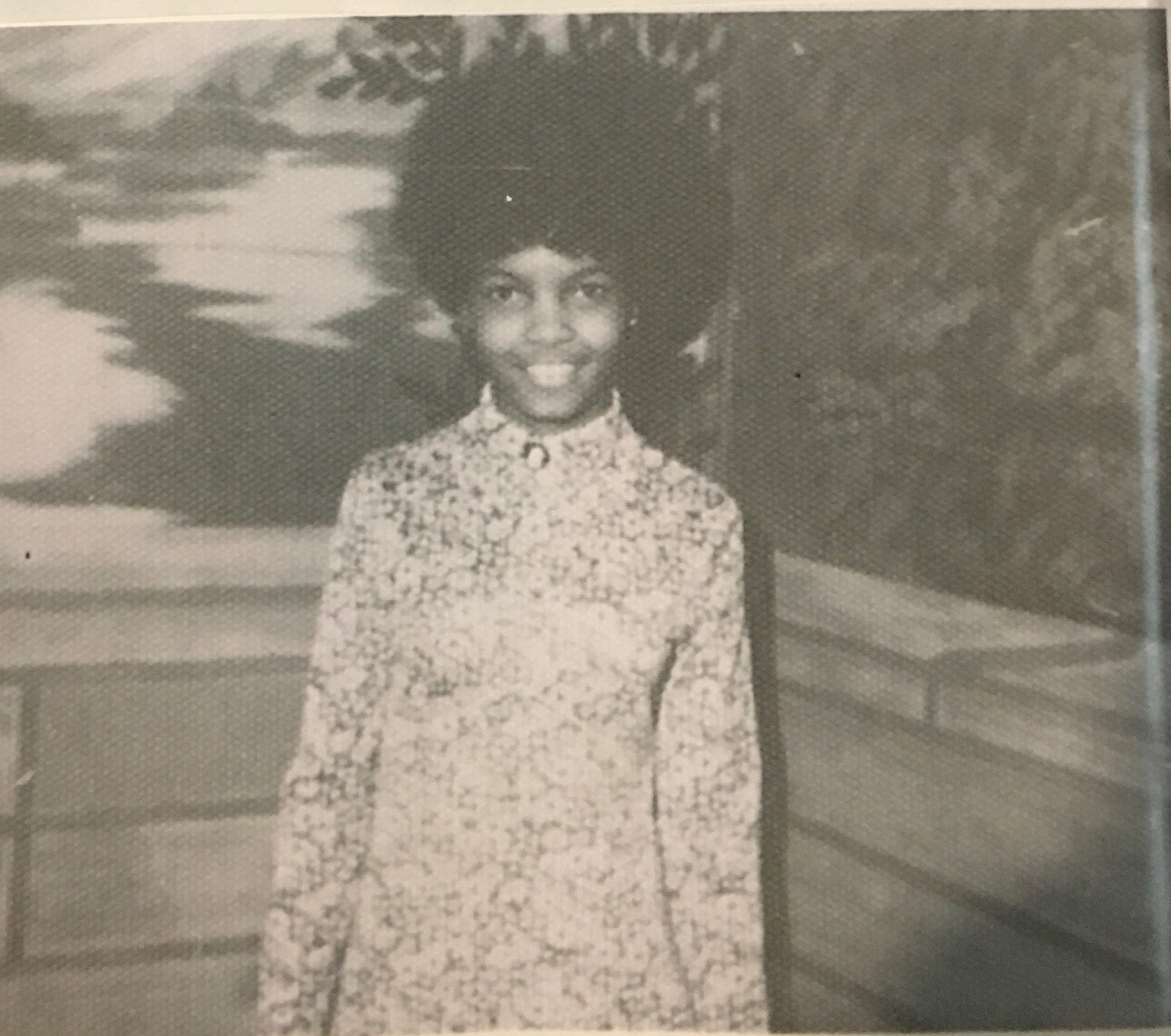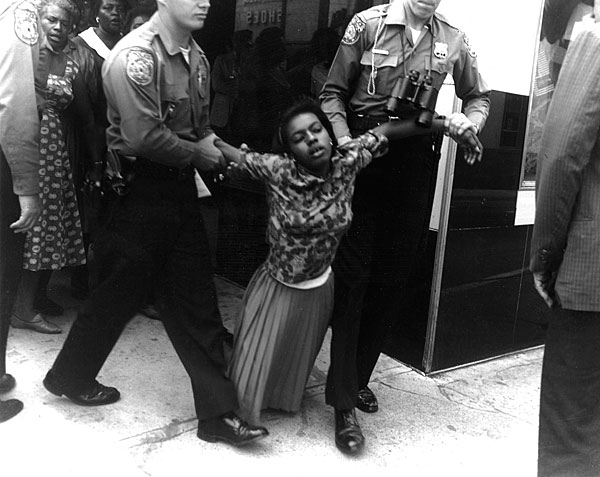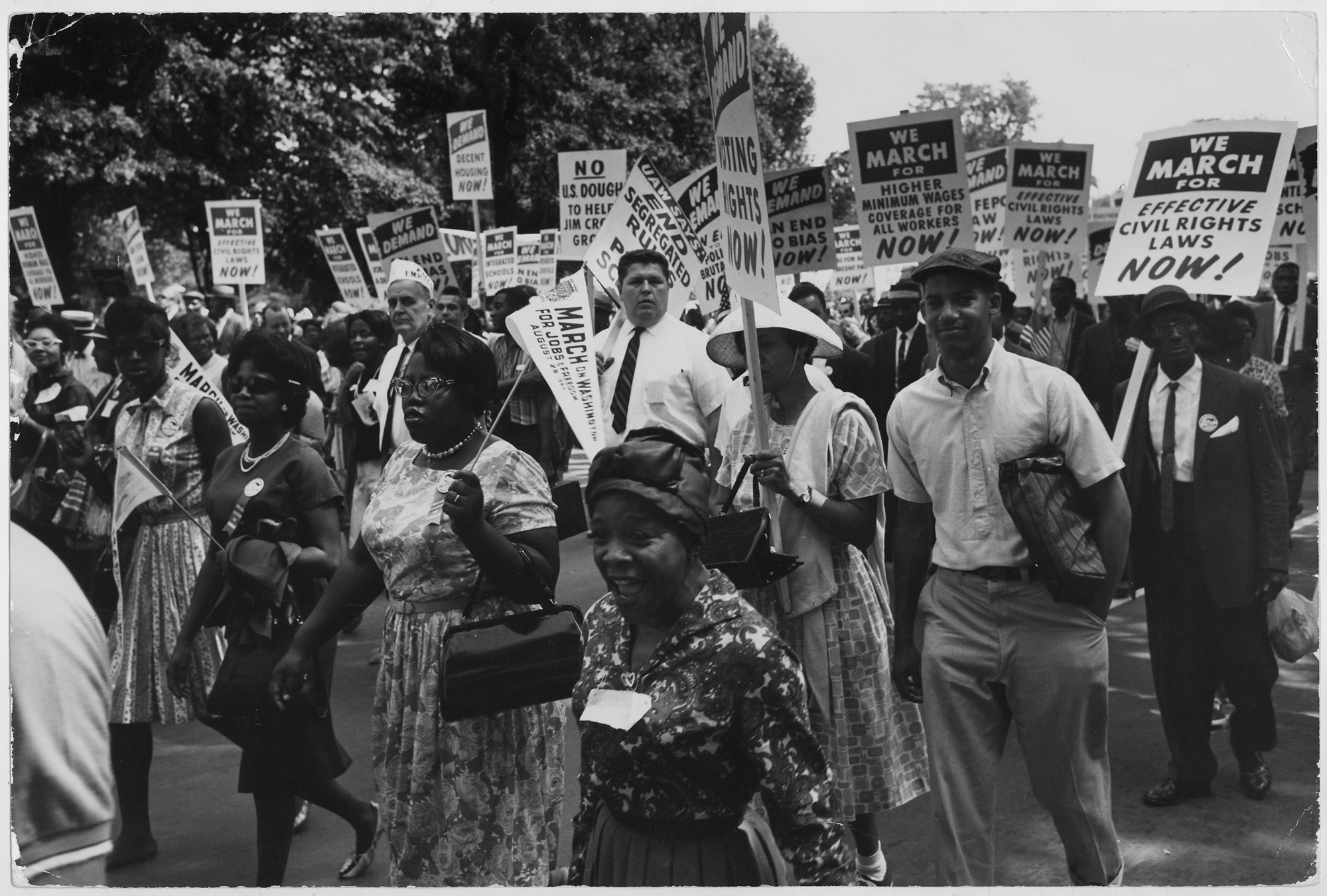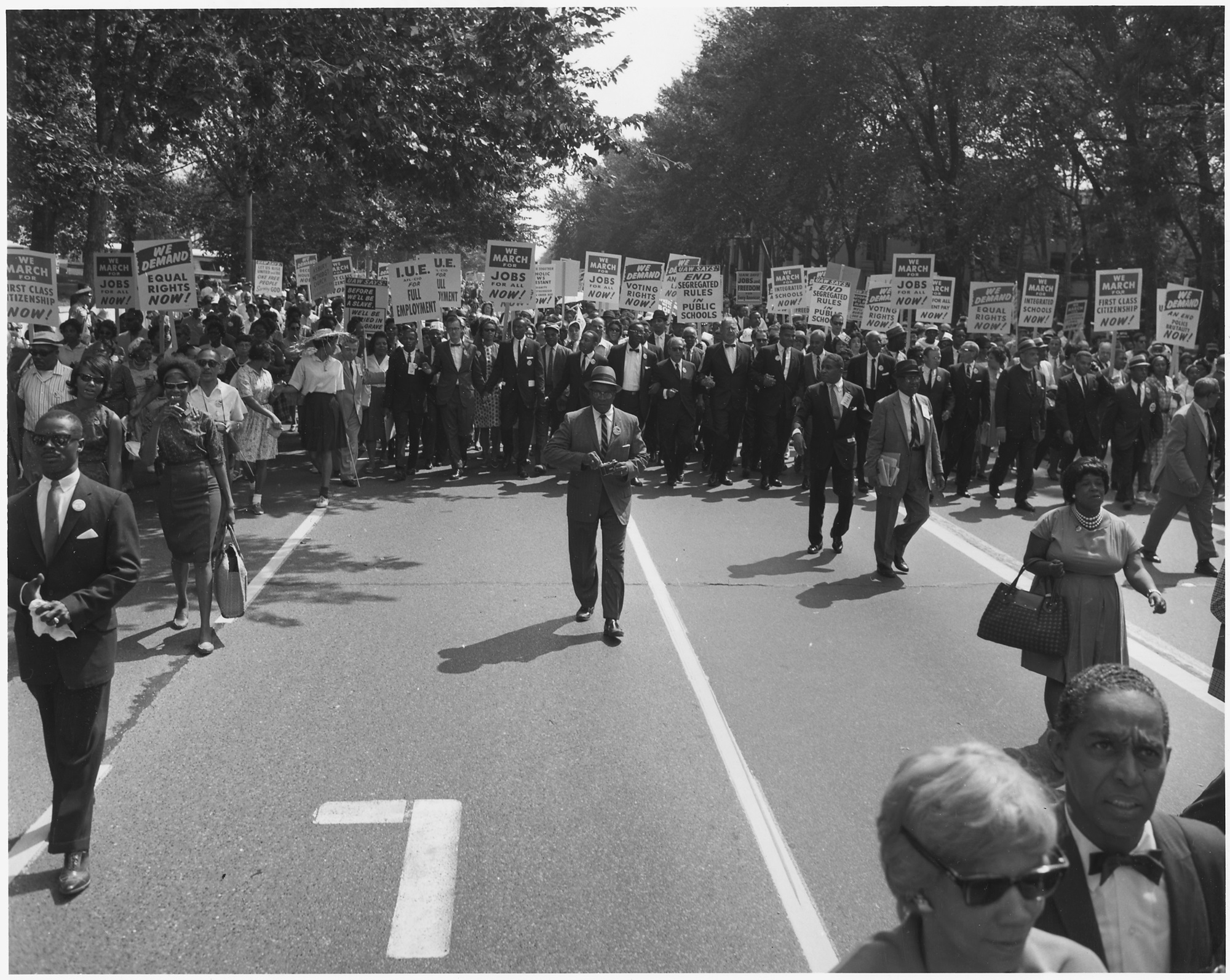Fifteen-year-old civil rights protester Connie Chaney Carter was in jail on July 11, 1963, when the Rev. Martin Luther King Jr. came to speak in her hometown of Danville, a city that was in the midst of one of the nation’s most brutal civil rights clashes.
So Chaney Carter made a point to hear him speak the next chance she got, which happened to be the March on Washington later that summer — even though it meant sneaking out of her house to do so.
“I asked my dad if I could go, and of course he said no,” Chaney Carter, now 77 years old, recalled. 
She had been arrested twice already that summer under a citywide injunction that limited protesting. Her parents, worried for her safety because of the city police department’s violence toward protesters, did not support her participation in the movement.
“But I was determined,” she said.
So were other Danville protesters who had been fighting all summer for integration and fair hiring practices. They boarded buses to Washington, organized by the city’s civil rights leaders and members of the Southern Christian Leadership Conference.
Because of the intensity of Danville’s movement, its protesters were at the front of the pack at the March on Washington.
Though Danville’s movement had faded from conversation and was passed over by institutional historians until recently, the city’s civil rights activity was a significant part of the national movement in 1963, said Karice Luck-Brimmer, a local Black historian and genealogist.
About 250,000 people from across the country attended the march on Aug. 28, 1963, many of them already familiar with what had been happening in Danville.
“Danville was one of the last places that the SCLC, King’s task force, stopped before the March on Washington,” Luck-Brimmer said. “Danville was in the limelight because of Bloody Monday.”
June 10, 1963, brought the first violent clash of the summer in Danville, when police officers and deputized municipal workers used batons and fire hoses on peaceful protesters. King said during his speech in Danville the next month that the police brutality in that city was some of the worst he’d ever witnessed.

Last year marked the 60th anniversary of the summer of 1963, Bloody Monday and the March on Washington.
Now, on the 61st anniversary of the march, former protesters still remember the camaraderie, encouragement and hope they experienced in the nation’s capital.
“I cannot tell you how lovely that day was, and how much love there was among the different people,” said Dorothy Moore-Batson, who was 18 years old at the time.
From Danville to D.C.
A few days before the March on Washington, several buses left from one of Danville’s Black churches at 5:30 a.m. Chaney Carter packed a brown paper bag full of clothes and made her way to town without waking her six sisters or her parents, who had already told her she could not attend.
“The bag tore while I was running for my life, in case my dad or someone else woke up and saw that I had gone,” she said. “I lost all of my clothes. … But I didn’t care if I had no clothes. I had friends going who would share their clothes with me, I was sure of it. I just wanted to get there.”
When she got on the bus, she tucked her head between her legs so that no one from her family would spot her through the window.
“I prayed to God that the bus would hurry up and leave,” she said.
When it did, it took protesters to communities surrounding Washington to be hosted by families who lived there — white families.
“That was the first time I had experienced a white person be nice to me,” said Chaney Carter. “I had never seen anything like it in my whole life. It felt like a dream to go into that community because we weren’t allowed to walk through the white communities in Danville.”
Each local family took in two or three protesters, housing them and spending time with them for a few days before the march.
“We slept in their beds, ate their food, got in the pool with their children,” Chaney Carter said — all things that felt impossible back home in Danville.
Moore-Batson stayed with a family in Bethesda, Maryland, which she considered to be “a city for the rich.”
“In 1963, we had very seldom heard of a gated community, so we were just so excited,” she said. “They had two small children, and they fed us and we talked and had fun together. We could play games in that community, we were able to go swimming, play basketball, volleyball, tennis.”
This experience was “a shock” after growing up in segregated Danville, Chaney Carter said.
As a young teenager, Chaney Carter would walk to a drug store that sold ice cream, dressed in her Sunday best after church. She remembers looking through the long glass windows to see the people inside.
“There were all these young, white children sitting at the counter, eating their ice cream out of little glass dishes, which looked like crystals to me,” she said. “I had never seen anything like those dishes. They were sitting there enjoying themselves.”
But she and other girls from her church had to stand outside and place their orders at the door. An employee would bring them their ice cream in disposable containers and then shoo them away, she said.
“I questioned my mama and daddy about that because they were kids just like us,” Chaney Carter said. “We were dressed decently … maybe not compared to them, but we had our little patent leather shoes and our little white socks and church dresses, and I thought we looked real good. It wasn’t like we had mud all over us or anything.”
The only answer her parents could give her was, “That’s just the way it is,” she said.
“That didn’t satisfy me,” Chaney Carter said. By the time she was 15 and the demonstrations had started, she was all in. 
Leading the march
Moore-Batson, Chaney Carter and other Danville protesters like Carolyn Wilson and John Pinchback found themselves at the front of the crowd during the March on Washington.
This was because the Danville movement was ongoing, and the level of violence toward protesters was so extreme, Moore-Batson said.
“Our movement had quieted down a little bit, but not too much, and it was still very fresh,” she said. “Unfortunately, our police department here in Danville were not our friends — yet. So that may have been why [we were in front].”
It felt important to lead such a large group, she said, especially coming from a relatively small town.
“You would think that protesters from Alabama or Georgia or someplace like that would lead, but for Danville to be up front, we were so excited about that,” she said.
Moore-Batson was surprised by how well so many people from so many different places got along, she said.
“As far as you could see, there were people, people from everywhere. People from all different colors and races and backgrounds,” she said. “There were nuns, ministers, all kinds of church people. And there were no fights or arguments at all. It was such a lovely, beautiful, peaceful time.”
It was a wholly different experience than in Danville, said Chaney Carter, where the protesters were almost entirely Black and the police force, city officials and justice system were all white.
“I was so surprised to see so many, not just white people, but people of other nationalities all there for the same purpose,” she said. “It was a really emotional time. People would just come up to you and hug you, and it was like, ‘Is this real?’ Because we had never seen that.”
And many of the marchers had heard about what was happening in Danville, she said. Moore-Batson remembers talking to people from Wisconsin who knew the story.
Read more about Danville’s civil rights movement
Cardinal’s special report on the civil rights movement in Danville includes stories, historic photos and audio recordings from Bloody Monday and beyond.
“We were just so amazed that they had heard of Danville, Virginia,” she said.
John Lewis, a civil rights activist who went on to become a U.S. congressman, even mentioned Danville in his speech to the crowd.
“In its present form, this bill will not protect the citizens of Danville, Virginia, who must live in constant fear of a police state,” he said at the march, speaking about then-President John F. Kennedy’s Civil Rights Bill.
Lewis’ remarks were followed by King’s famous “I Have a Dream” speech.
Despite the hundreds of thousands of people in attendance, Moore-Batson remembers being able to “hear every word of every speech that was made,” she said.
“People had so much respect for those who were speaking that nobody talked during that time,” she said.
This remained true during performances by singers at the march, including Mahalia Jackson and Danville’s own Camilla Williams, she said.
Williams, an opera singer who was born in Danville, was the first Black person to receive a regular contract with a major American opera company, the New York City Opera.
At the march, she replaced singer Marian Anderson, who was supposed to lead the crowd in the national anthem but was unable to get there on time, Luck-Brimmer said.
“They asked Camilla Williams to do it, and according to her oral history, she was shy because of all the people watching,” Luck-Brimmer said. “She was scared, but she remembered running up the steps of the Lincoln Memorial and being out of breath, but knowing that she had to do it because this march was going to be in the history books.” 
Returning home
As she expected, Chaney Carter got an earful from her parents when she returned home after the march. She was arrested again the next day for attending a show at the Capitol Theater, a segregated movie theater in the city.
“You are hopeless,” she remembers her father telling her.
Chaney Carter had grown used to getting in trouble at home for her participation in the movement. It got to the point where she declined to get out of jail on bond because she knew that the punishment at home would be worse than staying put.
“Being in jail with all my friends and other people from the community was fun,” she said. “I didn’t find it to be a punishment. But when I got home, I knew I was going to be in trouble.”
She had the same defiant attitude toward Danville police, she remembered.
Chaney Carter said she remembers a police officer asking her whether she knew she was breaking the law during a local protest.
“I said, no, I didn’t know I was breaking the law. I thought people had a right to demonstrate,” Chaney Carter recalled. “Then I said, ‘Even if I had known, I still would’ve done it.’ … I guess I just had a smart mouth back then.”
She didn’t let the police, her arrests or her parents deter her from participating, and she returned to Danville in late August encouraged by the march and moved by King’s speech.
The protests had quieted by this point in the summer, Luck-Brimmer said. Instead, much of the civil rights effort in Danville now centered around voter registration.
At the time, literacy tests were a prerequisite to registering to vote. Toward the end of the summer of 1963, Moore-Batson taught reading and writing and canvassed in communities around the city.
The March on Washington reinvigorated these efforts, she said.
“It made most of us feel like working even harder,” Moore-Batson said. “It gave us more energy.”
She and other protesters returned to Washington in the months leading up to last year’s 60th anniversary of the movement with local filmmaker Jonathan Parker.
Parker, who was working on a documentary about the summer of 1963 in Danville called “The Movement,” filmed the former protesters on the National Mall, where they had listened to King speak six decades earlier.
“Going with them to D.C. was powerful,” he said. “To hear them talk anecdotally about where they were [during the march.]”
And Chaney Carter returned in 2009 and again in 2013 to attend former President Barack Obama’s inaugurations.
While working on Obama’s campaign in Danville and Pittsylvania County, she was paired up with a recent Black college graduate from Washington named Danny Johnson, who was in the area to work on the campaign as well.
“There was a contest to register the most people, and whichever pair won would get tickets to go to the inauguration,” Chaney Carter said. “Well, you know we won. And I worked on both campaigns, so I won the tickets to go to both of his inaugurations.”
While in Washington to attend the inauguration, Chaney Carter visited the Johnson family home in the area.
“It was like deja vu,” she said. “I realized, I’ve been here before, I’ve seen this before. And it dawned on me that this was exactly the same community I had stayed in in 1963.”
It was a full-circle moment, she said. Chaney Carter had taken Johnson, an out-of-towner, under her wing, not knowing that he grew up in the same community that had taken her in decades earlier.
Danville has changed drastically since Chaney Carter stole out of her house to attend the march at 15 years old. But there’s still room for improvement, she said.
“It’s not as bad as it was, but it’s not as good as it should be,” she said.
And despite the passage of time and the changes in the city, the details of the summer of 1963 and the March on Washington still remain vivid for Moore-Batson, she said.
“People were just so in love with each other,” she said. “I’ve never, never experienced anything like that since that day. I will never forget that.”



